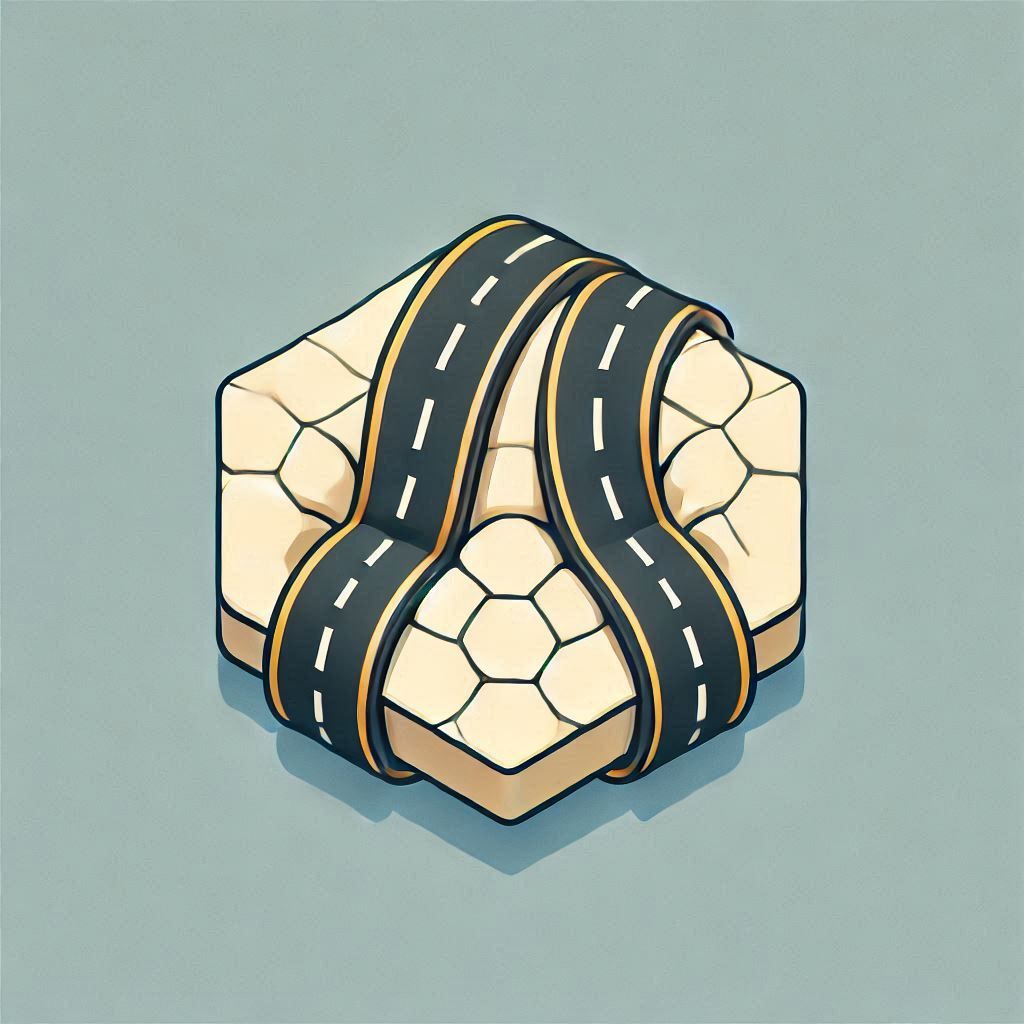
Slicron (2024)
2 - 2 persone
60 - 120 min
7+
Al momento questo prodotto non è disponibile presso nessun venditore.
Descrizione:
Introduction:Slicron (from Scottish Gaelic: slighean a' crìonadh, meaning "shrinking paths") is a drawless self-stalemate game for two players: Black and White. It is played on the hexes (cells) of an initially empty hexagonal board. The recommended board size is 5 cells per side, but boards of 4 and 6 are also valid. Each player has access to a sufficient supply of stones of their own color.
Definitions:
A group is a maximal set of stones of the same color connected to each other. A single stone is also a group.
The path of a group is a minimally connected subgroup containing two stones on the edge. A group can contain multiple paths as long as each of them is the minimal path between two edge stones. If the group does not contain two stones on the edge, it has no path.
A surplus stone is a stone within a group that is not part of a path.
The length of a path is the number of stones it contains.
Turns:Black plays first and then turns alternate. On your turn, perform the following actions in the order listed:
Place a stone of your color on an empty cell.
Remove from the board all surplus stones from the group of the placed stone if, by doing so, it forms a new path of your choice among the possible paths in the group.
If the placed stone is adjacent to one or more friendly groups with paths and forms a new path, it must be shorter than all of those paths; otherwise, the placement is illegal.
End of the game:The player who places the last stone wins.
To balance the game, before starting, the first player places a black stone on an empty cell and the second player chooses a side. This balancing method is called the pie rule.
—description from the designer
Introduction:Slicron (from Scottish Gaelic: slighean a' crìonadh, meaning "shrinking paths") is a drawless self-stalemate game for two players: Black and White. It is played on the hexes (cells) of an initially empty hexagonal board. The recommended board size is 5 cells per side, but boards of 4 and 6 are also valid. Each player has access to a sufficient supply of stones of their own color.
Definitions:
A group is a maximal set of stones of the same color connected to each other. A single stone is also a group.
The path of a group is a minimally connected subgroup containing two stones on the edge. A group can contain multiple paths as long as each of them is the minimal path between two edge stones. If the group does not contain two stones on the edge, it has no path.
A surplus stone is a stone within a group that is not part of a path.
The length of a path is the number of stones it contains.
Turns:Black plays first and then turns alternate. On your turn, perform the following actions in the order listed:
Place a stone of your color on an empty cell.
Remove from the board all surplus stones from the group of the placed stone if, by doing so, it forms a new path of your choice among the possible paths in the group.
If the placed stone is adjacent to one or more friendly groups with paths and forms a new path, it must be shorter than all of those paths; otherwise, the placement is illegal.
End of the game:The player who places the last stone wins.
To balance the game, before starting, the first player places a black stone on an empty cell and the second player chooses a side. This balancing method is called the pie rule.
—description from the designer
